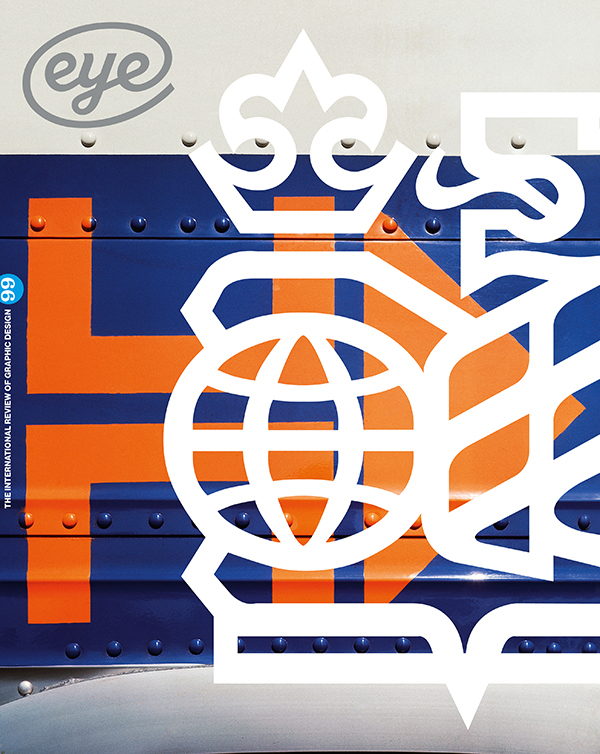Autumn 2019
One lifetime is not enough
A Colorful Life: Gere Kavanaugh, Designer
Edited by Louise Sandhaus, Kat Catmur and Sara Stemen. Design by Louise Sandhaus and Kat Catmur. Princeton Architectural Press, £28.99, $40 Reviewed by Aileen Kwun
If you are not familiar with the joyous work of designer Gere Kavanaugh, one look at the vibrant cover of her recent monograph, by Louise Sandhaus and Kat Catmur, will give you an immediate and visceral feel for her sensibility. Eye-popping with punchy colour, pattern and folksy warmth, the design doyenne’s work spans multiple mediums and seven decades, and – like many great talents of her generation – she has yet to stop. ‘One lifetime is not enough, even if you try,’ she said in a 2017 interview.
True to the eccentric octogenarian designer, who’s been known to rock a fiery red mane and tote around with a rubber-chicken handbag, the book has a lot of heart. Illuminating anecdotes, by a variety of colleagues and friends, are interspersed throughout, while a richly illustrated overview of her career, accessibly compiled by the authors, gives context and grounding to a figure whose place in the canon, despite being a fixture in Los Angeles, is not as cemented as contemporaries such as Corita Kent or Deborah Sussman, whose New Wave style embodied an exuberant graphic eye adjacent to Kavanaugh’s own.
Cover of A Colorful Life: Gere Kavanaugh, Designer. Design by Louise Sandhaus and Kat Catmur.
Top. Spread from A Colorful Life showing Kavanaugh’s designs.

Through a series of photographs, sketches and personal snapshots over the years, we get an intimate glimpse of the vivacious woman behind the work – in luscious and vibrant mid-century Technicolor – and a firm sense of her place among the nexus of great twentieth-century design talents.
Born in 1929 in Memphis, Tennessee, Kavanaugh’s talents were nurtured at an early age. She enrolled at the Memphis Academy of Arts Junior Saturday school aged eight, completed her undergraduate degree there and finished with a graduate degree from Cranbrook Academy of Art. Her early career is a fun trot through modern design history: Kavanaugh’s first job was working at General Motors with the legendary Harley Earl, who famously headed its Styling division. Earl remains a divisive figure, both lauded for becoming the first executive of design at a major US corporation (a milestone for the design discipline, to be sure) yet criticised in Modernist circles for emphasising style over function.
Kavanaugh’s work, though, makes a strong case for the functional merits of decorating alongside design, and not without rigour. ‘It is just as important to feed the soul visually as to feed the stomach,’ she attested, in a 1968 profile in Pace magazine.
Her own role in the General Motors Styling division – as one of the so-called ‘Damsels of Design’, as an in-house team of female designers was patronisingly referred to – underlines the pervasive condescension faced by female designers, though it did not stop her from producing top-notch, imaginative work across mediums. While at General Motors, she produced promotional print graphics, model kitchens, and trade show displays, including the ‘Feminine Auto Show’ of 1958, which boasted a lavish garden-themed installation complete with a towering birdcage containing dozens of live birds.
Notably, Kavanaugh did not train explicitly as a graphic designer. Trained in the Cranbrook manner to design at every scale, the number of projects that could be categorised as graphic design is easily outnumbered by her work in textiles, furnishings, industrial design, interiors, toys, public art, retail environments and exhibitions. And yet her undeniably commandeering visual and graphic eye, as one tool of many in her design arsenal, is what easily defines her signature. ‘Graphic’, in the broadest sense, remains the most apt word to describe her work.
Spread from A Colorful Life showing Kavanaugh’s designs and the designer herself (right).

Establishing her independent design practice in 1964, Kavanaugh designed numerous offices, retail spaces and residences, and worked with clients ranging from Neutrogena, Aardvark Letterpress and Joseph Magnin (she designed the interiors, colours and display furniture, in collaboration with architect Frank Gehry and graphic designer Deborah Sussman) to Isabel Scott Fabrics (with whom she worked closely to help establish a factory in South Korea). She later founded her own textiles company, Geraldine Fabrics, in 1972.
Her personal thanks bookend the tome, literally, set with jumbo Helvetica and flower glyphs on the endpapers. They count friends and influences ranging from Frank Gehry (a former studio mate of the 1960s, along with Sussman), Ruth Asawa, Charles Rennie Mackintosh and Maira Kalman, to everyday objects like Italian food, the city of Santa Fe, fairy tales, vernacular architecture and ‘any alphabet’. (She’s designed a number of custom typefaces, for projects including Arklow Pottery, in Ireland, and the Nixon Presidential Library and Museum.)
This is the latest substantial publication on a prominent California design figure to come from Louise Sandhaus, who brought us the landmark Earthquakes, Mudslides, Fires & Riots: California and Graphic Design 1936-1986 in 2014 (see Abbott Miller’s review of the book in Eye 90). Like many figures in that book, Kavanaugh is an overdue addition to the canon, despite her winning the 2016 AIGA Gold Medal, and this book is sure to spread her cheerful, larger-than-life outlook. As Sandhaus writes, ‘Our lives would be gloomy without the Gere Kavanaughs of the world to show us how to look – to see – through their special lenses.’
Aileen Kwun design critic, author and journalist, Brooklyn
First published in Eye no. 99 vol. 25, 2019
Eye is the world’s most beautiful and collectable graphic design journal, published for professional designers, students and anyone interested in critical, informed writing about graphic design and visual culture. It is available from all good design bookshops and online at the Eye shop, where you can buy subscriptions and single issues.

